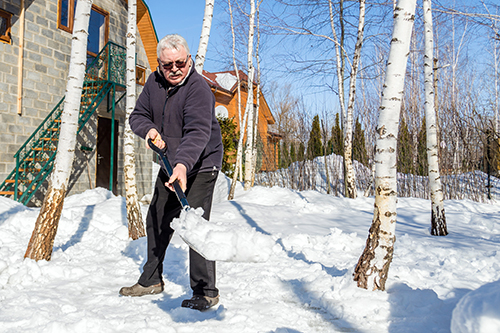Meigs Health Today: Hypothermia


Meigs Health Today: Hypothermia
By Leanne Cunningham, Director of Nursing
While we have not had a very cold winter thus far, one must consider that temperatures could drop very low at any given moment, which would put people at risk for hypothermia and frostbite. Hypothermia, an abnormally low body temperature, is caused by prolonged exposure to cold temperatures. When exposed to cold temperatures, the body starts to lose heat more quickly than it is produced. With lengthy exposures, it will use its stored energy, which leads to lower body temperature. Hypothermia will affect the brain, and a person will be unable to think clearly or move well. As a result, the person will not know that it’s happening and will be unable to do anything about it. It is important to note that hypothermia can even occur at temperatures above 40 Degrees Fahrenheit if a person is chilled from rain, sweat or being in water.

Most at risk for developing hypothermia are: older adults with inadequate food, clothing, or heating; babies sleeping in cold bedrooms; people who remain outdoors for long periods—the homeless, hikers, hunters, etc.; people who drink alcohol or use illicit drugs.
Warning signs for hypothermia in adults include: shivering, exhaustion or feeling very tired, confusion, fumbling hands, memory loss, slurred speech and drowsiness. For babies, warning signs are bright red, cold skin and very low energy.
Hypothermia is a medical emergency and should be taken very seriously. If you see any of the above warning signs, you should take the person’s temperature. If it is below 95 Degrees Fahrenheit, get the person medical help immediately!
If you cannot get help immediately, follow these steps from the CDC:
- Get the person into a warm room or shelter.
- Remove any wet clothing the person is wearing.
- Warm the center of the person’s body—chest, neck, head, and groin—using an electric blanket, if available. You can also use skin-to-skin contact under loose, dry layers of blankets, clothing, towels, or sheets.
- Warm drinks can help increase body temperature, but do not give alcoholic drinks. Do not try to give beverages to an unconscious person.
- After body temperature has increased, keep the person dry and wrap their body, including their head and neck, in a warm blanket.
- Get the person proper medical attention as soon as possible.
A person with severe hypothermia may appear dead. In this scenario, perform CPR while continuing to warm his/her body. Sometimes a person with hypothermia can be successfully resuscitated.
Frostbite, or freezing of body tissue, is also another serious complication of exposure to cold temperatures, and must be taken seriously. Body areas often affected by frostbite are ears, nose, cheeks, chin, fingers and toes. Frostbite can lead to permanent damage and amputation (the surgical removal) of affected areas.Most at risk of frostbite are those with poor circulation and those who are not properly dressed for extremely cold temperatures.
A person who has frostbite may not know they have it until someone else points it out because the frozen parts of their body are numb, but if you notice redness or pain in any skin area, get out of the cold or protect any exposed skin as frostbite may be beginning. Signs and symptoms of frostbite may include: a white or grayish-yellow skin area, skin that feels unusually firm or waxy, and numbness.
If (1) a person shows signs of frostbite, but no signs of hypothermia and (2) immediate medical care is not available, follow this CDC guidance:• Get the person into a warm room as soon as possible.• Unless absolutely necessary, do not walk on feet or toes that show signs of frostbite—this increases the damage.• Do not rub the frostbitten area with snow or massage it at all. This can cause more damage.• Put the areas affected by frostbite in warm—not hot—water (the temperature should be comfortable to the touch for unaffected parts of the body).• If warm water is not available, warm the affected area using body heat. For example, you can use the heat of an armpit to warm frostbitten fingers.• Do not use a heating pad, heat lamp, or the heat of a stove, fireplace, or radiator for warming. Affected areas are numb and can easily burn.
It is very important that you do not substitute these steps for proper medical care. Frostbite should also be checked by a health care provider.
So, what can you do to be protect yourself from hypothermia and frostbite? The smartest step is to be prepared for exposure to extremely cold temperatures. Prepare both your home and car for the unexpected. Also, take a CPR and/or First Aid class so that you may help others should the need arise. I would also recommend that you make it a habit to check on your neighbors and family members, including pets as they can also suffer from both hypothermia and frostbite, during the winter months.
If you would like more information on hypothermia and frostbite, some additional resources can be found through the Centers for Disease Control at CDC.gov.






